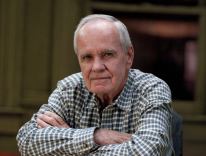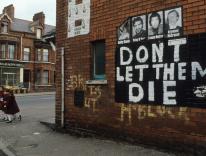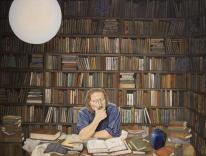I found myself disagreeing with Paul Johnston’s review (3/6/15) of In Paradise, Peter Matthiessen’s last novel. I fear that his sober, almost disappointed judgment, putting stress on the author’s failure to engage the Shoah with sufficient spiritual vision, will put readers off. Johnston asks for a novel that “requires us to remember – to insist- that the world is God’s creation and not our own, and that all people, including those unlike ourselves, are created in the image of God.” One can scarcely disagree with such a belief in the Incarnation, but Johnston is really posing a broader question: can literature, fiction, say anything adequate about the Holocaust? He raises a standard that is exclusive, and I would hold absolute in a way the hedges out the imagination. In the course of the review, I find that Johnston’s shows his own hesitation at the conclusion he reaches. While he admits Matthiessen achieves partial success, he notes that Matthiessen’s Buddhism keeps his vision from transcendence. As if looking back over his shoulder, Johnston can’t help but admire that struggle that is this artistic grappling with the past. The failure of the novel is what it says or doesn’t say to us and to those in the future.
In Paradise takes us to an interfaith retreat at Auschwitz fifty years after the liberation of the camp. The participants are Buddhists, Jews, Christians, atheists, relatives of former Nazi guards, local Polish residents, and Clements Olin, a Polish American academic with family roots in Oswiecim, a town near the camp. Olin is the center of consciousness, ostensibly doing research on a Holocaust survivor, Tadeusz Borowski, and author of This Way to the Gas, Ladies and Gentlemen. He is also attempting to discover his own family history, especially the facts surrounding his birth and sudden removal to the USA. The novel explores the holocaust through Olin’s interactions with the other participants and those residents of the Polish village of his birth. The plot structure allows Matthiessen to provide a chorus of voices, some pious, others abrasive, some accusatory, and other proprietary. In sum, the characters grope in speech to confront the events that took place around them fifty years before. The weight of genocide burdens those in silent vigil upon the entry ramps. Their evening statements of witness after long reflection in silence find not consensus but divisiveness, and provide real opportunities for the novelist’s characterization.
Matthiessen is writing fiction, a work of the imagination attempting to engage great evil. His chief character, while certainly matching some of his author’s experiences, is not Peter Matthiessen. To read the work as autobiography, as Johnston appears often to do, certainly muddies that analysis. The complexity of Olin’s character in relation to, for example, an artist survivor of the camp and especially a novice nun, Catherine, builds a sense of human bewilderment with a horror that Olin increasingly understands marks his birth. The relationship of Olin and Sister Catherine, its very inappropriateness in terms of her vocation and the setting, plagues Olin, tests his self-understanding (and Catherine’s) as it is shadowed by the Reception Ramp of Auschwitz. I submit that Matthiessen is true to wayward fallen humanity, and equally true to the salvific force of common understanding – limited as it is. I would like to quote at length the scenes in which the relationship develops. Suffice it to say, Matthiessen provides what we seek in realist fiction: character revelation in relation to profound human problems.
Irving Howe was fully alive to the dangers of writing and the Holocaust. In an essay by that name, he considers Theodore Adorno’s revulsion at the writing of any sort of imaginative literature after such knowledge as proceeds from the camps. Howe responds by remarking : “we find ourselves veering – less by choices than by necessity, from external ‘evidence’ to voice, from the story itself to the subjectivity of the ’storyteller.’” Further Howe says, using an analogy to the classical myth of Perseus and the Medusa, that writers have adopted the technique of considering the holocaust “through a reflection in a mirror or a shield.” – a technique I think can be fairly said that Matthiessen employs.
One of Johnston’s chief objections to the work arises from the scene that gives the novel its title. Sister Catherine approves of Olin’s quotation of her namesake’s poetry. St. Catherine of Siena wrote “All the way to Heaven is Heaven.” [The quotation’s conclusion, not cited by Matthiessen, reads “because He said, ‘I am the Way.’”] This passage of apparent agreement is set against Olin’s provocative retelling of an apocryphal account of the words of Christ on the cross. The good thief asks, “I beseech you, Jesus, take me with you this day to Paradise.” To which Christ responds, “No, friend, we are in Paradise right now.” The vision is, of course, not the promise of eternal bliss, but the affliction of earthly suffering. Johnston objects: “But Matthiessen must have known that a better Catholic response is available. The apocryphal ‘no’ transforms Christ’s words into something like a Buddhist koan of the necessity of transcending worldly suffering through detachment rather than hope.” Indeed that might be the case, but surely that is Matthiessen’s vision and that of his character – the novelistic or fictional truth. Johnston continues: “Maybe Matthiessen is thinking not of those who suffered in the death camps, but of his fellow retreatants [Again the assertion involves autobiography and not a fictional narrator] and, by extension, his readers. How are we to live in a world where something as terrible as the Shoah has taken place.” Indeed, perhaps he is thinking in just this way.
I would offer that the scene that Johnston sees as only partially successful, "Dancing at Auschwitz," really a circling movement in which some of the participants join hands to link in commonality of hope, works in ways that the review denies. Johnston comments: “But it’s not enough. The railroad tracks on the book’s dust jacket ask for something more than moments of spiritual transcendence.” “Not enough”? That really is the judgment that I think readers have to take on themselves. The proof, the test, is in the reading, and to repeat, I would hope the Johnston’s negative comments, based on a spiritual vision that we can’t but embrace, not deter readers from entering the extraordinary fictional world that Peter Matthiessen framed and endured. The novel is indeed a test case on the limits and the strengths of the imagination.
Please email comments to [email protected] and join the conversation on our Facebook page.
Previous Story
How to Ascend
Next Story
Jean Vanier awarded the Templeton Prize


